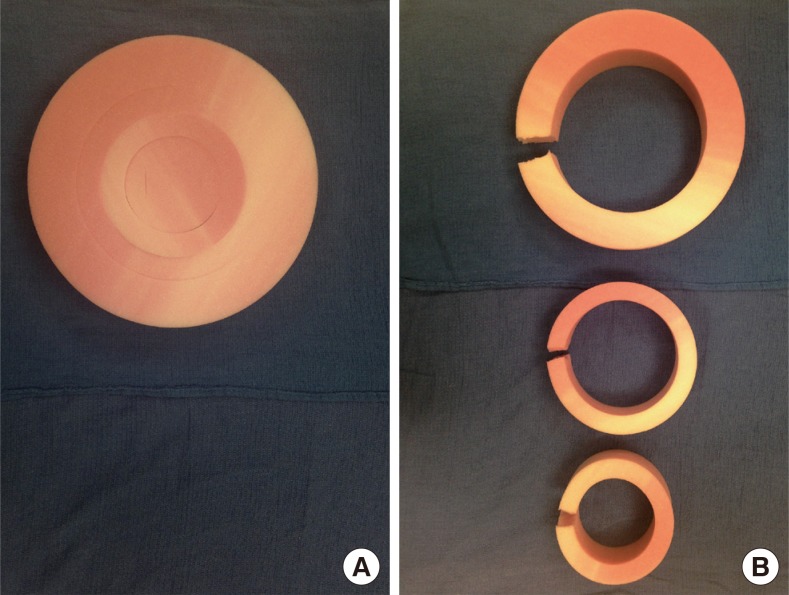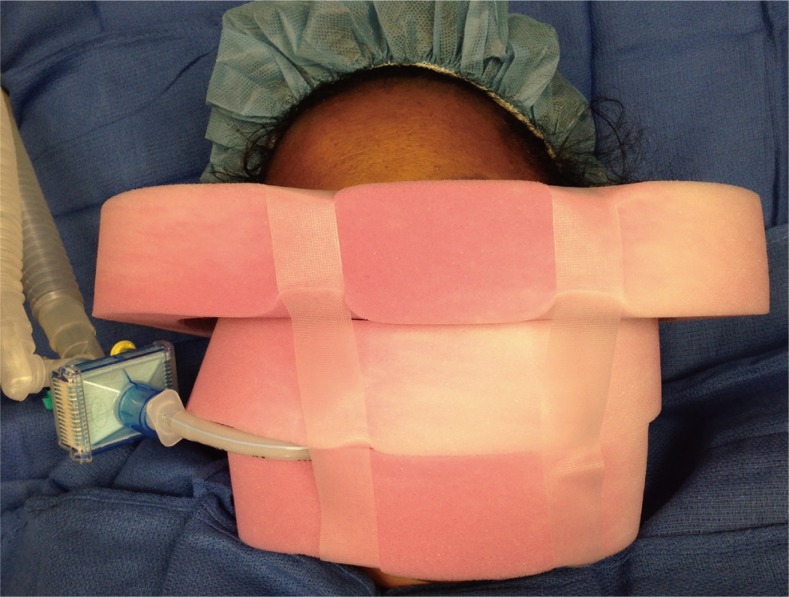Safe patient positioning is a basic tenet of surgical preparation. Numerous publications describe the principles of protecting areas of the body that may be prone to injury from pressure or stretch [1,2,3,4]. Undoubtedly, many surgeons and anesthesiologists have developed their own modifications to accommodate for their particular needs and comfort, while maintaining the fundamental elements necessary to provide for a safe surgical environment.
We herein describe a simple method to guard the face from direct pressure during surgery of the upper torso. The need arose performing autologous breast reconstruction that required prolonged operating in the upper chest. This incurs the risk of the operating surgeon and assistant to inadvertently rest their elbows on the patient face, risking displacement of the endotracheal tube and potentially injuring the eyes, nose, and mouth.
The Devon Whole-in-One (Kendall) headrest is typically used to cushion the patient's head in the supine position. It is made of non-toxic, latex-free foam, and can be adjusted to fit by removing portion of the foam as needed. We use the foam to pad the patient's face during surgery in the technique described below. Other headrests and foam (such as "egg crates") tend to be bulky and may impede surgical access by partially obstructing the surgical field.
The headrest is comprised of four circular components of varying thicknesses. The inner core is discarded. The outer ring is torn in half and used to cover the eyes like sunglasses. The second layer is cut and placed over the nose, with a slit made to accommodate for the endotracheal tube. The third layer is split and placed over the chin (Figs. 1, 2).
The retail cost of a box of 36 units ranges between $70 and $80, or roughly $2 per headrest. The low cost, ease of use, malleability and high availability of this device makes it an ideal solution for a common problem.





